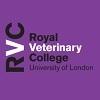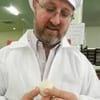Explore all the information on
Poultry vaccines
Disease prevention by vaccination is an integral part of flock health management protocols. Active immunization using live vaccines is the current industry standard. Routinely used vaccines in chickens include MDV, NDV, IBV, and IBDV, and in turkeys NDV and HEV. Newer vaccines, including molecular recombinants in which genes of immunogenic proteins from infectious agents are inserted into a live viral vector, are also being examined for commercial use. Efforts are under way to enhance vaccine efficacy by the use of adjuvants, particularly cytokines. The vaccine delivery systems include in ovo injection, aerosol, spray, drinking water, eye drop, and wing web injection. The in ovo vaccination procedure is relatively new and at the present time it is used primarily to vaccinate broiler chickens against MDV. Birds respond to vaccines by developing humoral and cellular immune responses. There are two main types of vaccine available for poultry: live or killed.
Abstract
The devastating outbreaks of Ranikhet disease from time to time and consequent loses incurred by broiler industry made its way to be included into the list A diseases of OIE long back. A cost-effective preventive measure to avoid this calamity depends on the affordability of the marginal farmers rather than the intensive poultry production units, therefore preparation of cheaper vaccine with sufficient protective efficiency is the need of the hour. It has...
Comments : 0
Recommendations: 1
Fiona Tomley (Royal Veterinary College) talked about several aspects regarding vaccination, including evaluation of genotypes and antigens, during the 1st PoultryUniverse Coccidiosis Congress in Curitiba, Brazil....
Comments : 1
Recommendations: 3


Effect of Bacillus subtilis DSM 32315 on the intestinal structural integrity and growth performance of broiler chickens under necrotic enteritis challenge
Suggested link
Ricardo Rauber (BRF, Brazil) talked about the disease's control programs in the field, during the 1st PoultryUniverse Coccidiosis Congress in Curitiba, Brazil....
Comments : 0
Recommendations: 3
Can the Mg ts-11 vaccine cross-protect against mycoplasma synoviae? ...
Comments : 0
Recommendations: 0


Effects of DON and antidote on pro-inflammatory mRNA expression of broiler
Suggested link
Doug Korver (University of Alberta) spoke on poultry diets, performance and immunity, during the 1st PoultryUniverse Coccidiosis Congress in Curitiba, Brazil....
Comments : 0
Recommendations: 3
What are the reasons that render a flock response to a combination of Ma5 plus clone 30 is 1- Good for ND --Elisa : Mean titre , CV %,Minim titre , Max titre all are good 2-IB --Elisa Mean titre, CV %, Maxim titre all are good but the minim titre did not equal to half of the mean titre. What is the corrective action in this case? ...
Comments : 3
Recommendations: 0
Ahmed Elkady, Marketing Director at ME VAC, spoke on the variety of vaccines that are being produced for different species, during VIV MEA 2018 in Abu Dhabi, United Arab Emirates....
Comments : 5
Recommendations: 8
Mycoplasmas are bacteria characteristic for their lack of a cell wall, small size, and small genome (1). These pathogens are evolutionarily related to the low-%GC Gram-positive Clostridiales (2), and they are highly host specific and tend to inhabit mucosal surfaces within their host (1). Within the poultry industry, the ability of Mycoplasma gallisepticum to infect the respiratory and reproductive tracts of several avian species has made it a pathogen of great...
Comments : 2
Recommendations: 4
This broiler chickens “specialized” course is an overview of important infectious and non-infectious diseases at different stages of breeder and broiler production. The objective of the WVEPAH education program is to offer a highly specialized training on all specific aspects of broilers (meat chickens) health; pathology, epidemiology,...
Comments : 9
Recommendations: 1
Brian Jordan (University of Georgia) talked about the Ark99 strain and what was found out during the investigation, regarding mutations in the genome, during IPPE 2018 in Atlanta, USA....
Comments : 0
Recommendations: 3
Findings Avian influenza virus (AIV) is a member of the Orthomyxoviridae family, Influenzavirus A genus . AIV is characterized by its ability to undergo constant antigenic changes [1]. AIV envelope contains two major glycoproteins, hemagglutinin (HA) and neuraminidase (NA) [2]. The HA/NA proteins play a key role during cellular infection. Different HA/NA combinations allow AIV subtype discrimination. Depending on the damage caused to avian species, AIVs are categorized...
Comments : 0
Recommendations: 2
Introduction: The purpose of this study was to demonstrate the presence of virus disease of infectious Laryngotracheitis (ILT) in Algeria in laying hen farms; through the demonstration of seroconversion signing a recent viral passage and also a comparative study cost / benefit of vaccination against this disease. Up ‘til 2011, no study was conducted to highlight the presence of the...
Comments : 12
Recommendations: 0
1 Introduction Characterized after its human orthologue (Herpes Simplex Virus; HSV a DNA containing virus), Marek’s disease virus (MDV), or Gallid herpesvirus 2 (GaHV-2), the etiologic agent for Marek’s disease (MD) is an alpha-herpes virus that targets avian species (Gallus gallus domesticus) where it establishes chronic infection. Notably recognized as a multifaceted disease, MD is characterized based on immunosuppression, neurological disorders and neoplastic...
Comments : 0
Recommendations: 10
Vetworks invites to their VIV MEA 1-Day Seminar: Tracing The Path to Antibiotic Free Poultry Production in Middle East Conditions. The event will be held on February 4th, as part of their Poultry Technical Training Series in 2018.
Scope of the seminar: Alternative options to using antibiotics for disease prevention in animals include improving hygiene, better use of vaccination, and changes in animal feeding and husbandry practices.
Language: English / Location: Abu Dhabi...
Comments : 4
Recommendations: 4
Introduction Salmonella enterica serovar Enteritidis (Salmonella Enteritidis) accounts for nearly 20% of laboratory-confirmed illnesses of salmonellosis in recent years (CDC, 2014). Consumption of shell eggs and egg products is associated with risk of infection from Salmonella Enteritidis in humans (CDC, 2003; Cowden et al., 1989; Elson et al., 2005). A large multistate outbreak of Salmonella Enteritidis led to a recall...
Comments : 1
Recommendations: 2
Drug Incompatibility: Definition: Drug Incompatibility refers to interactions between two or more substances which lead to changes in chemical, physical, therapeutic properties of the pharmaceutical dosage form. A drug interaction is a situation in which a substance (usually another drug) affects the activity of a drug when both...
Comments : 18
Recommendations: 1
Introduction A range of studies have investigated the structure of the microbiome in the gut of broiler chickens. Comparison across studies has proven difficult because of the variety of different methods used; e.g. culture based studies [1], G+C profiling analysis [2], quantitative PCR [3], and 16S rRNA based studies. The 16S-based methods have used a number of different approaches including terminal restriction fragment length polymorphism analysis [4], temporal temperature...
Comments : 8
Recommendations: 11
Asian poultry production systems rapidly adopt and often adapt new health protection strategies but maximum biological performance, long-term sustainability and cost are only some of the aims of producers. It is these adaptations are the focus of this paper. New strategies are often added to previous strategies and very rarely replace or displace previous strategies and thus usually increase cost of production often with no demonstrable improvement in health status. Interference between...
Comments : 2
Recommendations: 1


Effect of Bacillus subtilis DSM 32315 on the intestinal structural integrity and growth performance of broiler chickens under necrotic enteritis challenge
Suggested link
Patti J. Miller, Veterinary Medical Officer at the Southeast Poultry Research Laboratory (USDA), explained the importance of biosecurity to go along with a vaccination program, during IPPE 2017 in Atlanta, USA....
Comments : 3
Recommendations: 1
Introduction In June 2012, a highly pathogenic avian influenza (HPAI) virus, subtype H7N3, was identified as the cause of a severe disease outbreak in commercial layer farms in the Western State of Jalisco. Approximately 22.4 million birds died due to the infection or to the preventive stamping out of neighboring farms. 6 On July 26, 2012, a national vaccination...
Comments : 5
Recommendations: 2







.jpg&w=3840&q=75)






.jpg&w=3840&q=75)


.jpg&w=3840&q=75)
















